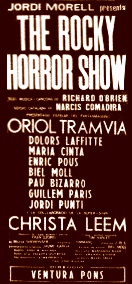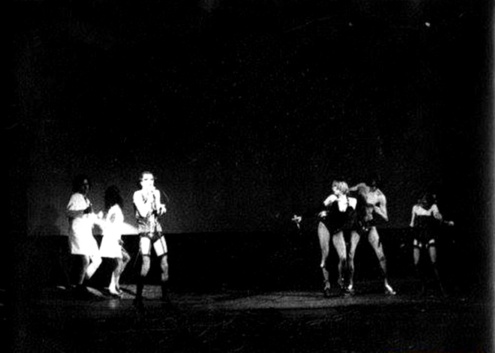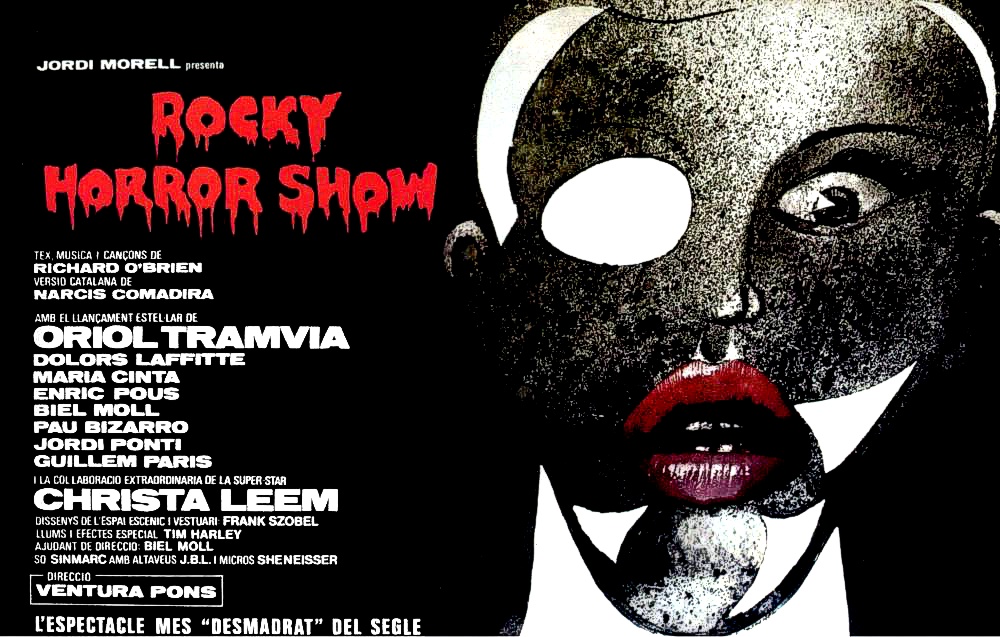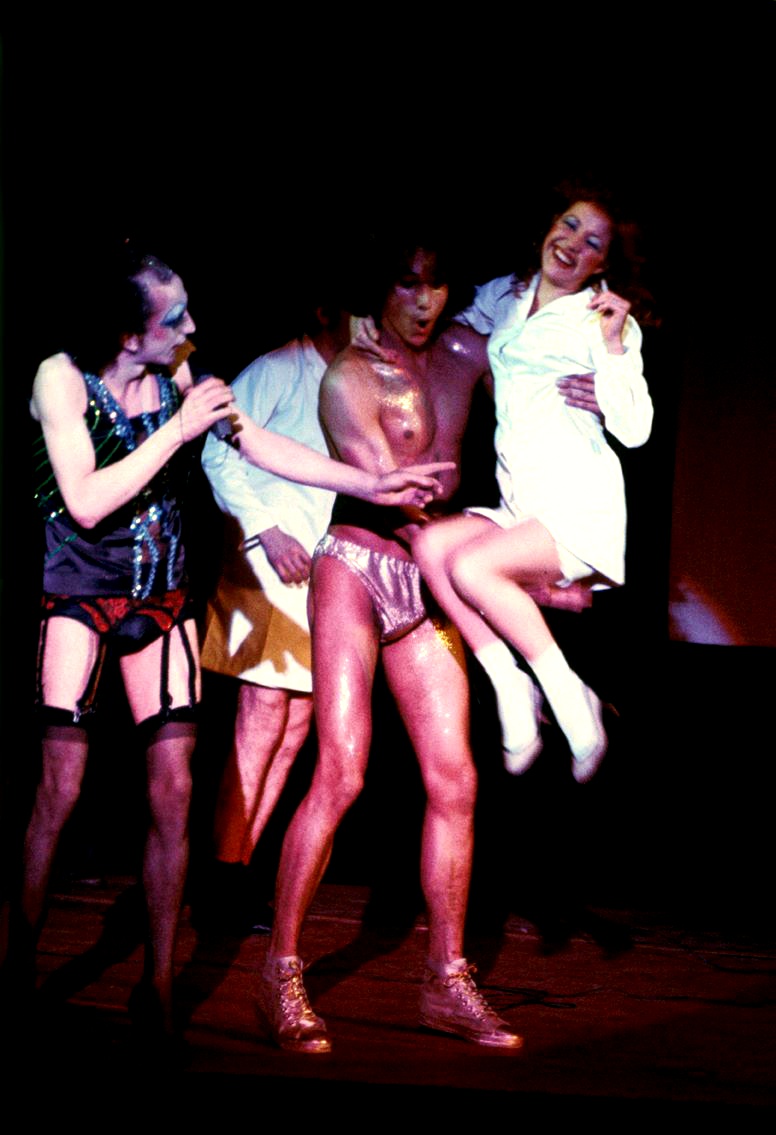
|
|
Opened March 4, 1977 at the Teatro Romea, Barcelona running for 2 months
|

 |
|
Oriol Tramvia |
|
Christa Leem |
|
Maria Cinta |
Ramon Poch |
Jordi Ponti |
Narrator |
Biel Moll |
Riff-Raff |
Guillem Paris |
Columbia |
Dolores Laffite |
Rocky |
Pau Bizarro |
Eddie/Dr. Scott |
Enric Pous |

Produced By |
Arturo Gonzalez |
Directed By: |
Ventura Pons |
Translation by: |
Narcissus Comadira |
Musical Director: |
Teddy Bautista |
| Set and Costumes: |
Szobel Frank copying Brian Thomson and Sue Blane |
| |
|
|
Thank You Tony Pazuzu for the information.
|

 |
Another unauthorised production, the second for Spain, but the first in Catalan!
With the slogan "L'espectacle month desmadrat the segle" (The "run riot" show of the century) was released on March 4, 1977 at the Teatro Romea the Catalan version of lyricist Narcis Comadira directed by filmmaker Ventura Pons. The cast included the charismatic star of "Barcelona Mill and Night", Christa Leem, an artist who marked an era in the striptease and the music hall of the '70s. The other characters were played by stars of Catalan music, with Oriol Tramvia (Dr. Frank Esteve), Maria Cinta (Anna Prou Grossa) and Dolors Laffite (Columbia). The cast consisted of Guillem Paris (Riff Raff), Jordi Ponti (Ramon Poch), Enric Pous (Eddie / Dr. Scott), Pau Bizarro (Rocky Horror) and Biel Moll (Narrator).
In the words of its director , "I did not choose the work. They just asked me to direct it and I like it , it's an unconventional show. The behavior of the bridal couple during the whole work is a constant moral bombing "He continues talking about his musical section:" This is typical rock 60s, much along the lines of American Graffiti and the phantom of Paradise."
 |
|
|
|
As happened in the previous Madrid production, Dr. Frank N. Furter characters, Janet Weiss and Brad Majors, were rebaptized with the names of Dr. Frank Esteve, Anna Prou Grossa (Anna Pretty Gorda, due to the size of your vagina) and Ramon Poch (by the limited size of their genitals). Oriol Tramvia moved away from the schemes established in previous assemblies, building the character outside the typical "crazy queen" standard. This show called the "cultural botifarra" and was of the view that a work like this should not have been represented in the Romea, but in a place where people could dance and play.

  
|
|
| |
|

